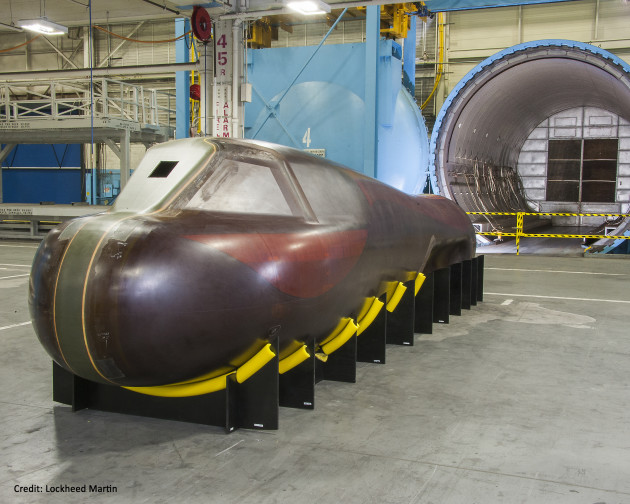NASA’s decision to use Sierra Nevada Corporation’s Dream Chaser mini-shuttle to carry cargo to and from the International Space Station marks the most positive development to date for a space program that’s been a decade in the making. But the head of that program says it’s only the beginning.
“We’re getting more interest in the last couple of weeks than we’ve had before,” Mark Sirangelo, SNC’s corporate vice president of space systems, told GeekWire on Monday.
The privately held Nevada-based company mostly flies under the radar, even though it’s a significant military contractor. But thanks to the cargo contract announced this month, SNC’s Colorado-based space systems operation is likely to get a brighter spotlight – as well as additional work for the Dream Chaser.
The vehicle takes advantage of lifting-body designs that go back to the 1980s and 1990s. SNC’s 21st-century version looks like a scaled-down version of NASA’s space shuttle, with a wingspan of 23 feet. In comparison, the shuttle’s wingspan is 78 feet.
The Dream Chaser is designed to be launched atop an Atlas 5 rocket, with its wings in a folded-up configuration for orbital deployment. The cargo version will be equipped with an unpressurized “trunk” in the back. The spaceship should be capable of carrying more than 5 tons of cargo to the space station. It’s also expected to deliver payloads from orbit to NASA in just a few hours, touching down with a smooth runway landing.

That quick and gentle delivery method is one reason why the Dream Chaser is due to be added to NASA’s cargo fleet of SpaceX and Orbital ATK space vehicles, starting in late 2019. The space station program’s chief scientist, Julie Robinson, said that feature is attractive for handling biological samples from space – potentially including live experimental animals.
It would be effectively like we’re an airline. We own the Dream Chasers.
The financial terms have yet to be nailed down, but in his interviews, Sirangelo says there’s a general sense that a contract for at least six spaceflights should be worth at least a billion dollars, if not more.
Sirangelo said two Dream Chaser space planes will be built for NASA’s use – and maybe not just for NASA.
“It would be effectively like we’re an airline,” he explained. “We own the Dream Chasers. NASA is our priority client, so they would get priority use of the vehicle. However, when they’re not using them, and as long as it doesn’t interfere, we have the capability of using the same vehicles for other clients.”
Those clients could include other space agencies that want to pursue their own orbital research programs, with or without access to the space station. And the Dream Chaser’s basic design can be adapted to accommodate a crew rather than cargo. A couple of years ago, SNC proposed the Dream Chaser as a crew vehicle for NASA’s use, but lost out to SpaceX and the Boeing Co. in the contract competition.
Dream Chaser with cargo module
An artist’s conception shows Sierra Nevada Corporation’s uncrewed version of the Dream Chaser space glider in orbit with a cargo module attached at the back. (Credit: SNC)
For now, SNC is focusing on the cargo-only version, but Sirangelo said customers will eventually be able to choose from a wide range of Dream Chaser options.
“It’s very similar to how an aircraft manufacturer like Boeing or Airbus plans their vehicles,” he said. “They have a core vehicle built for the 747 or the Airbus 330 or 320. And they can have different missions for the same airframe. It could be a passenger vehicle, it could be cargo, it could be a military variant, it could be for firefighting or some type of scientific research. We’ve approached it the same way.”
Those are the sorts of opportunities that SNC hopes to pursue in the future, and those are the sorts of inquiries that Sirangelo may well be getting – although he declined to provide details during this week’s interview.
The bottom line is that after 10 years of development, NASA’s contract announcement finally provided the critical mass to turn the Dream Chaser into a reality. “People now see that the vehicle will be built,” Sirangelo said.
Dream Chaser orbital cabin
The cabin assembly for the orbital Dream Chaser space plane takes shape at Lockheed Martin. (Credit: Lockheed Martin)
So what now? Later this year, a Dream Chaser prototype will be put through its second aerodynamic test glide through the atmosphere – analogous to the tests that were done in the late 1970s using the space shuttle prototype known as the Enterprise.
For the upcoming test, the prototype will be dropped from a helicopter, Sirangelo said. After that, the atmospheric tests will be conducted at higher altitudes, using a carrier system that has yet to be identified.
At the same time, SNC is working with one of its lead industrial partners, Lockheed Martin, to build the structures for its space-capable Dream Chasers. Meanwhile, the European Space Agency has signaled that it will go
